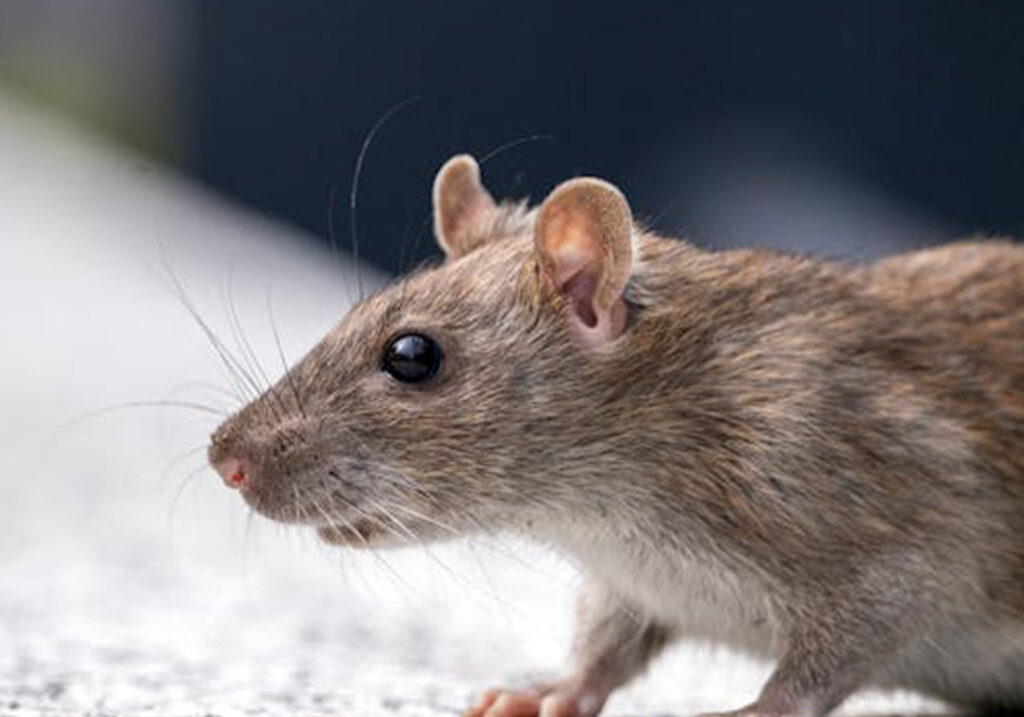Rats are dangerous!
They do damage not only to one’s health, but to property as well. They would enter your home, your office, or your shop and leave a trail of destruction.
Rats are also notorious for invading garages, where they can find shelter, food, and materials to build their nests.
These rodents pose serious risks to health and property, carrying diseases and causing structural damage by gnawing on wires, insulation, and stored items. If left unchecked, a rat infestation can escalate quickly, creating an unsafe and unpleasant environment. Fortunately, with proactive measures and consistent maintenance, you can protect your garage from these unwelcome pests.
The danger of having rats around
Rats pose significant health risks to humans and pets. These rodents are known carriers of numerous diseases, including leptospirosis, hantavirus, salmonella, and plague. They can spread these illnesses through their droppings, urine, saliva, and contaminated surfaces. Ingesting food or water that has been exposed to rats, even unknowingly, can lead to serious health complications. Additionally, rat-borne allergens can trigger respiratory issues, particularly in individuals with asthma or other sensitivities.
Beyond health concerns, rats can cause extensive damage to property. Their sharp teeth allow them to gnaw through wood, insulation, and even electrical wires, increasing the risk of short circuits and fire hazards. Rats often build nests inside walls, attics, or storage areas, using materials like fabric, paper, and cardboard. These nesting activities can compromise the structural integrity of a space, resulting in costly repairs. Furthermore, they can ruin stored items, particularly food, furniture, and important documents.
The presence of rats also creates psychological stress and discomfort. Their nocturnal activity, characterized by scratching and scurrying sounds, can disturb sleep and create a sense of unease. Knowing that these pests are in close proximity often leads to anxiety about their potential to spread disease or damage property. Therefore, addressing a rat problem promptly is essential not only for maintaining physical health and safety but also for preserving peace of mind and overall quality of life.
Understand Why Rats Are Attracted to Garages
Rats often find garages irresistible due to the abundance of resources and hiding spots they offer. Understanding what attracts them is the first step in prevention.
Shelter and Warmth
Garages provide a safe haven for rats, especially during colder months. They often seek out dark, enclosed spaces such as storage boxes, under shelving units, or behind piles of clutter where they can hide and nest undisturbed.
Food Sources
Stored pet food, birdseed, garbage, or even crumbs can draw rats into your garage. Once they identify a consistent food source, they are likely to settle in and multiply rapidly.
Access to Water
Garages may contain water sources like leaking pipes, pet water bowls, or even condensation on appliances. Rats need water to survive, and the availability of this resource can make your garage particularly attractive.
Seal All Entry Points
Rats can squeeze through holes as small as ½ inch in diameter, making it crucial to thoroughly inspect your garage for potential entry points.
Inspect the Garage for Gaps
Examine walls, floors, doors, and windows for any openings that rats could use to enter. Pay special attention to areas around utility pipes, vents, and the edges of doors.
Seal Cracks and Holes
Use steel wool, caulk, or metal mesh to block small holes. For larger gaps, consider using durable materials like sheet metal or hardware cloth. Ensure that weatherstripping on garage doors is intact and replace any damaged seals.
Install Door Sweeps and Screens
Add door sweeps to the bottom of garage doors to prevent rats from sneaking underneath. Mesh screens on windows and vents can also block entry while maintaining airflow.
Eliminate Food and Water Sources
Reducing the availability of food and water is key to discouraging rats from entering your garage.
Store Food Properly
Keep all food items, including pet food and birdseed, in airtight, metal or heavy-duty plastic containers. Avoid leaving pet food out overnight, as it can attract rodents.
Manage Garbage
Use a trash can with a secure, tight-fitting lid, and take out the garbage regularly. Avoid storing organic waste in the garage, as its smell can lure rats.
Fix Water Leaks
Repair any leaking pipes, faucets, or appliances that may create water sources for rats. Ensure that the garage remains dry by addressing condensation or standing water promptly.
Keep Your Garage Clean and Organized
A cluttered garage offers numerous hiding spots for rats, making organization and cleanliness vital.
Declutter Regularly
Dispose of unnecessary items and organize the remaining ones neatly. Use plastic storage bins with tight lids instead of cardboard boxes, as rats can chew through cardboard easily.
Maintain a Clean Environment
Sweep and vacuum the garage regularly to remove crumbs, dust, and other debris that may attract rats. Avoid piling up newspapers, fabric, or wood, as these materials can be used for nesting.
Elevate Stored Items
Store items on shelving units at least 18 inches off the ground to make it harder for rats to access them. Keep the floor space as clear as possible to limit hiding spots.
Use Rat Repellents and Traps
When preventive measures aren’t enough, repellents and traps can help control rat activity in your garage.
Natural Repellents
Certain scents, such as peppermint oil, eucalyptus, and ammonia, can deter rats. Soak cotton balls in these substances and place them in areas where rats might enter or hide.
Electronic Repellents
Ultrasonic devices emit high-frequency sounds that are unpleasant to rats but inaudible to humans. These can be placed in garages to discourage rodent activity.
Set Traps Strategically
Use snap traps, glue traps, or live traps to catch rats. Place traps along walls, near entry points, and in areas where you’ve noticed signs of rat activity. Check traps daily and dispose of captured rats promptly to avoid unpleasant odors.
Monitor for Signs of Rat Activity
Detecting a rat infestation early can prevent it from escalating and causing extensive damage.
Common Signs of Rats
One of the most obvious indicators of a rat infestation is the presence of droppings. These small, dark, pellet-shaped feces are typically found near food sources, along baseboards, or in hidden corners. Fresh droppings are soft and shiny, while older ones are hard and dull. If you notice a cluster of droppings in specific areas, it’s a clear sign that rats have been active nearby and may still be present.
Another telltale sign of rats is gnaw marks. Rats constantly chew on materials to keep their teeth sharp and manageable. You may notice bite marks on wooden furniture, plastic containers, or even electrical wires, which poses a significant fire hazard. Stored items like boxes, fabric, or insulation may also show signs of chewing, as rats use these materials to build nests.
Rats also leave behind subtle tracks and smudges. They often travel along walls and baseboards, leaving greasy streaks or smudge marks from the oils on their fur. In dusty areas, you might spot footprints or tail drag marks. Additionally, unusual nighttime noises like scratching, squeaking, or scurrying are common signs of their activity, as rats are primarily nocturnal creatures. Being vigilant for these signs can help detect a rat problem early and allow for timely intervention.
Inspect Regularly
Regularly inspect your garage for any signs of rat activity, such as new entry points, nests, droppings, or gnaw marks. Routine checks can help you identify potential problems early, making it easier and more cost-effective to address infestations before they become severe. By staying vigilant and proactive, you can maintain better control over your garage’s cleanliness and security.
Prevent Reinfestation
Once you’ve eliminated rats from your garage, taking steps to prevent their return is essential.
Maintain Seals and Repairs
Regularly inspect and maintain the barriers you’ve put in place, such as weatherstripping, door sweeps, and sealed cracks. Address any new damage promptly.
Create an Unattractive Environment
Continue to store food securely, keep the garage clean, and avoid creating clutter. Without food or hiding places, rats are less likely to return.
Consider Professional Pest Control
If rat problems persist, enlist the help of a professional pest control service. They can provide tailored solutions and ongoing monitoring to keep your garage rodent-free.
Conclusion
As a property owner, you must do everything you can within your powers to get rid of rats. It will require vigilance, regular maintenance, and a combination of preventive measures. Understanding what attracts rats and addressing these factors can help you create an environment that is unappealing to them. Seal entry points,maintain cleanliness, and use repellents to keep your garage rodent-free.
A proactive approach not only safeguards your belongings but also protects your health and peace of mind. By staying consistent with these measures, you can ensure that your garage remains a safe, clean, and pest-free space for years to come.

